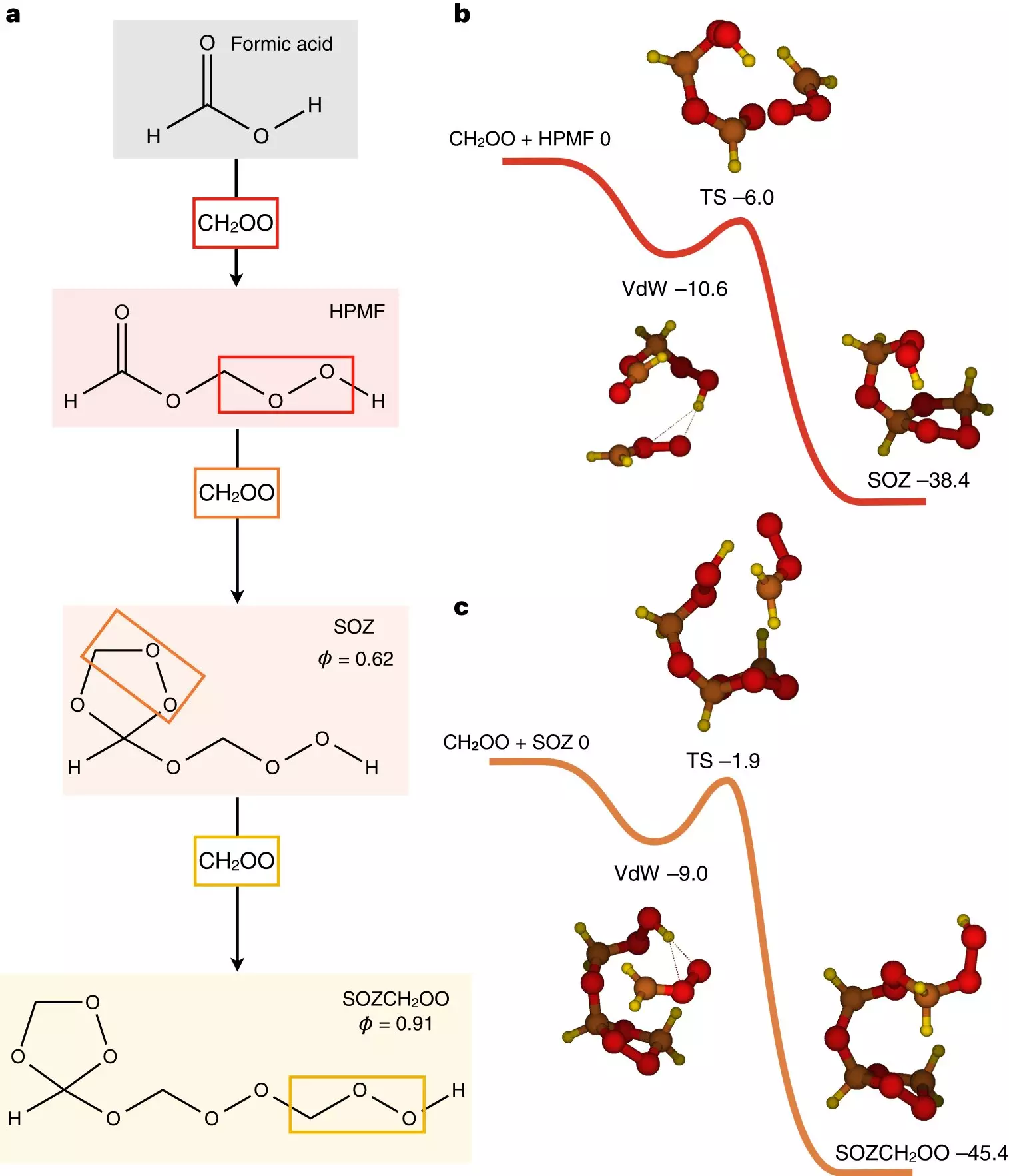The Earth’s atmosphere is a complex system with multiple layers, each playing a vital role in regulating our planet’s climate and air quality. However, there are still significant gaps in our understanding of atmospheric chemistry, particularly in the troposphere – the lowest layer of the atmosphere. One crucial aspect that has garnered attention in recent research is the formation and prevalence of secondary organic aerosols (SOAs), which have far-reaching implications for the Earth’s radiation balance, air quality, and human health.
A recent study by an international team of researchers led by the U.S. Department of Energy’s Argonne National Laboratory, Sandia National Laboratories, and NASA’s Jet Propulsion Laboratory has made groundbreaking discoveries in the field of atmospheric chemistry. The team’s focus was on a class of compounds known as Criegee intermediates (CIs), which are believed to play a crucial role in the formation of SOAs through a process called oligomerization. For the first time, the researchers were able to directly identify the chemical signatures of this process in the Amazon rainforest, a key area for SOA formation on Earth.
The discovery of CIs in the Amazon rainforest is a significant milestone in our understanding of atmospheric chemistry. Rebecca L. Caravan, an assistant chemist at Argonne and the lead author of the study, emphasized the importance of directly connecting field observations with theoretical predictions and lab experiments. This holistic approach has shed light on the role of CIs in altering the composition of the troposphere, potentially by an order of magnitude greater than previously thought.
The findings from the study have wide-ranging implications for atmospheric models. Carl Percival, a researcher at NASA’s Jet Propulsion Laboratory, highlighted that the updated modeling based on the team’s work only captured a fraction of the oligomerization signatures observed in the field. This discrepancy suggests that current models may underestimate the impact of CI chemistry on the troposphere, indicating the need for further research to fully comprehend the role of CIs in atmospheric processes.
Despite the significant progress made by the research team, there is still much work to be done in unraveling the complexities of CI reactions in the troposphere. As Caravan points out, ongoing studies are essential to fully define the role of CIs and their interactions with other chemical mechanisms in shaping the Earth’s atmosphere. The collaboration between different laboratories and the use of cutting-edge experimental and theoretical methods have laid the groundwork for future investigations into atmospheric chemistry.
The discovery of Criegee intermediates in the Amazon rainforest represents a major step forward in our understanding of atmospheric chemistry. By bridging the gap between field observations, laboratory experiments, and theoretical predictions, the research team has provided valuable insights into the role of CIs in driving changes in the troposphere. As we continue to explore the complexities of atmospheric processes, collaborations and advancements in scientific methods will be crucial in expanding our knowledge of the Earth’s atmosphere and its interactions with human activities.



Leave a Reply